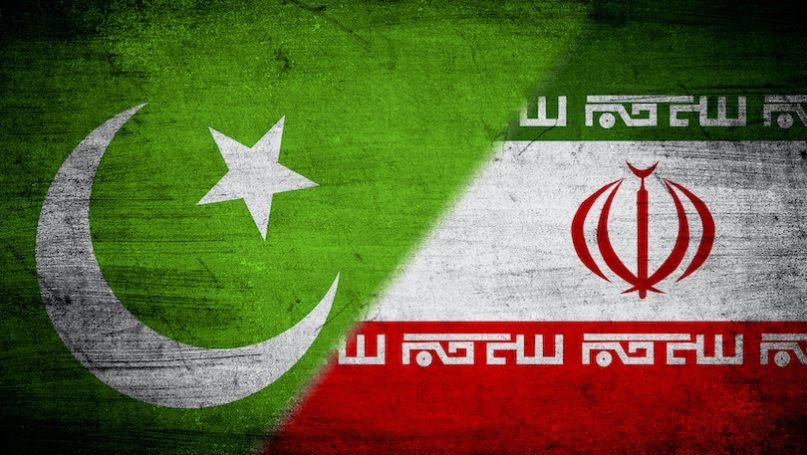Dr. Sahibzada Muhammad Usman
While the importance of the Iran-Pakistan relationship might seem apparent, the true depth and impact of this connection often go unnoticed. This intricate dynamic stretches back to Pakistan’s very beginnings, constantly evolving alongside global struggles, shifting alliances, and internal transformations in both nations.
This article explores the historical backdrop, examines key areas of conflict and cooperation, and explores potential paths for future diplomacy, aiming to illuminate the complexities and nuances of this critical bilateral relationship.
Pakistan-Iran relations date back to the immediate post-independence era in 1947. Iran was the first country to recognize Pakistan as an independent state. During the Shah’s reign, Iran and Pakistan enjoyed very friendly relations, assisting each other in various ways. This period coincided with a close relationship between Iran and the United States, forming a beneficial partnership within the context of the Cold War.
Several instances illustrate the strength of their relationship from the outset. Notably, Iran supported Pakistan during the wars with India in 1965 and 1971. This support wasn’t merely symbolic; it included extensive material assistance. This phase was marked by a remarkably similar worldview and strategic compatibility, largely stemming from both states’ alliance with American interests against the Soviet Union.
The 1979 Iranian Revolution marked a critical turning point in Iran-Pakistan relations. The toppling of the Shah and the rise of Imam Khomeini ushered in an era of ideological foreign policy in Iran. This shift, from pro-Western to revolutionary, fundamentally altered its relationship with Pakistan.
Following the revolution, the partnership cooled as their international stances diverged. Iran’s departure from the American sphere stood in stark contrast to Pakistan’s continued alignment with the West, particularly during the Soviet invasion of Afghanistan.
This period gradually transitioned from alliance to cautious engagement, often tinged with rivalry. Afghanistan proved to be a key factor shaping their dynamic. Both countries historically wielded influence in Afghanistan, backing different factions aligned with their strategic interests. This dynamic became even more complex after the Soviet withdrawal, especially with the rise of the Taliban. While Pakistan supported the Pashtun and Sunni Taliban, Iran backed the Northern Alliance, dominated by Persian-speaking Hazara factions. This divergent approach further strained their relationship.
Furthermore, the Balochistan region straddling the Iran-Pakistan border has long been a volatile flashpoint. Despite past collaboration against separatists, cooperation waned after the Iranian Revolution. Pakistan accuses Iran of harboring anti-Pakistan Baloch militants and figures like Kulbhushan Yadav, viewed as a direct attack on sovereignty and a threat to regional stability, particularly to the China-Pakistan Economic Corridor (CPEC).
Analysts perceive Iran’s alleged support for Baloch militants through a wider strategic lens. CPEC’s success could elevate Pakistan’s geopolitical standing, potentially overshadowing Iran’s strategically important Chabahar port. Some suggest Iran’s activities in Balochistan reflect a broader strategy to counterbalance the burgeoning Pakistan-China partnership.
Recent Iranian attacks in Balochistan and Pakistan’s subsequent diplomatic and military responses starkly illustrate the volatility of their relationship. These events highlighted critical issues of reciprocity and respect for sovereignty, prompting intervention from international actors like China, Russia, Turkey, and the UN to facilitate de-escalation. Ultimately, it was the diplomatic efforts of these external powers that helped resolve the latest altercation.
The renewed diplomatic engagement and commitment to negotiate indicate a mutual understanding of the need for stability through cooperation. However, fundamental conflicts and unresolved issues remain, suggesting that achieving lasting peace and durable stability will be a challenging journey.
Several key factors will determine the future course of the Iran-Pakistan relationship, including geopolitical changes at the national level, domestic politics, and the influence of foreign powers.
Balancing its traditional alliance with Arab states, particularly Saudi Arabia, presents a continuous diplomatic challenge for Pakistan. This balancing act becomes even more complex with the additional layers of Pakistan’s strategic partnership with China and Iran’s alignment with Russia (and to some extent, India). This complex grid of alliances necessitates strategic foreign policies from both Iran and Pakistan.
The Balochistan problem is inherently interstate, necessitating a joint effort by both countries to combat the threats of secession and terrorism. Past joint actions against Baloch separatists demonstrated the potential for cooperation. Rejuvenating such common efforts, perhaps through the mediation of a third party like China, could be a valuable step towards regional stability.
Economic cooperation, particularly through regional connectivity and development programs like CPEC and Chabahar, allows Pakistan to align its interests with Iran. Collaborative efforts in these areas could help subdue the competitive nature and cultivate a spirit of economic success that could weaken political tensions.
The recent thawing of relations, supported by global players, underscores the effectiveness of active diplomacy in resolving bilateral conflicts. Consistent diplomatic engagement by friendly nations and the intervention of international organizations like the United Nations can provide a necessary avenue for constructive dialogue, leading to conflict resolution.
The relationship between Pakistan and Iran is a complex landscape shaped by historical bonds, ideological transformations, and strategic considerations. Both countries must navigate immense challenges posed by internal and external forces in their quest for progress.
Engagement based on the reality of common objectives, mutually acceptable state sovereignty, and economic opportunities beneficial for regional stability is key to constructive engagement. Through a combination of bilateral arrangements and international facilitation, Pakistan and Iran can improve their relationship, leading to a harmonization that benefits not only both states but also other dynamics related to Middle Eastern politics in relation to South Asian geopolitics.
*Dr. Sahibzada Muhammad Usman is affiliated with the University of Pisa, Italy. He holds a PhD in geopolitics and is the author of Different Approaches on Central Asia: Economic, Security, and Energy.
**The opinions in this article are the author’s own and may not represent the views of The Diplomatic Insight. The organization does not endorse or assume responsibility for the content.
The Diplomatic Insight is a digital and print magazine focusing on diplomacy, defense, and development publishing since 2009.



